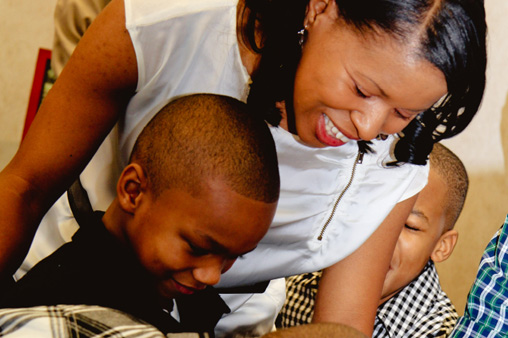Examining the Process of Adoption from Foster Care
Part 1 of 2

Adoption Specialist/Program Manager Veronica Black Turner has worked at Children Awaiting Parents for more than two decades. An expert in the field of adoption from foster care, Veronica has four sons, three of whom she adopted from care, so she knows first-hand the needs of both potential adoptive parents and long-waiting children in care. So it made sense for her to speak—“in her own words”—about CAP’s process, from beginning to end.
Veronica is CAP’s point person for families interested in pursuing adoption from foster care. From the first informational meetings to MAPP classes to search-and-match, to legal adoption and post-adoption support, Veronica is always there for families, and understands the process very well.
Q: For new prospective parents, what are all the steps to adopting from foster care, beginning with attending an informational meeting all the way to the legal, permanent adoption?
A: There are many steps prospective parents must take when considering adoption. We require all our families to attend our informational meeting. During that meeting, families learn more about requirements, process, and types of children we serve.
After attending the meeting and deciding to move forward, families are required to complete an application, which includes background and references checks. Families are then required to attend MAPP training (Model Approach to Partnerships in Parenting). This training is not a parenting class. It is designed to educate prospective parents on the needs of children in foster care, and how trauma can impact both the child and their family. Throughout the training we also help prospective parents identify their strengths and needs.
Once the training, background checks, and references are completed, the family is approved to adopt. Then the home study is written. This is a biography all about the family including their reason for adopting and their strengths. The home study process is a series of questions and interviews. After signing off on the home study, the family is assigned a caseworker to assist with search and match. This is an ongoing process until a child is identified.
Once a match is made and the family has agreed to move forward after reviewing the child’s file (full disclosure), visitation begins. After several visits between the prospective parents and child, placement will be considered if both parties are ready.
Once the child is placed with the prospective parent, the child must live with the family for a minimum of 3 to 6 months before they can petition the courts to finalize their adoption. During that time, the assigned caseworker will make monthly visits to supervise the placement. This is to ensure that the child’s needs are being met and the family is being supported.

Q. What types of people typically participate in CAP’s informational meeting? What rough percentage continue the process?
A. We have a wide variety of people inquiring about adoption who attend our informational meetings. They are married, single, and from all ethnic backgrounds. More than 75% of the people who attend our informational meetings go on to the next stage of the process.
Q. Talk about some of the most common questions from prospective parents in the beginning stages of the process. What are some common misconceptions?
A. Two of the most common questions prospective parents ask are how much does it cost to adopt from foster (there is a minimal cost to adopt from foster care) and who can adopt (anyone can adopt). As much as we work to debunk the myths, many people still think they must be married and that birth parents can take the children back after adoption.
Q. Describe search-and-match, and how the process works?
A. The search and match process is a unique way we work with families to identify children. Each family is assigned a caseworker who will meet with them once every two to three weeks until a match is made. During that time, the caseworker will identify children based on specific characteristics, the child’s needs, and the family’s strengths, and present those children to the family.
Q. How do you help prospective parents stay “open” as to the child(ren) they are looking for?
A. We educate our families to ensure they understand the reason why children enter foster care. We also make sure our families are trauma-informed to ensure they understand the “why” behind the behaviors. During the process, we help the families to identify their strengths and we assess their ability to meet the needs of the children. We also offer specialized trainings to equip parents with the tools to successfully parent.
Q. In your opinion, what makes for the best outcome both for parents and child?
A. The best outcome happens when prospective parents understand that there is no such thing as a perfect child, but there is a perfect child for them! Also, to find that child, they must be honest about what they can and cannot handle and recognize when their heart becomes bigger than their ability. That is what makes a successful placement, which is the best outcome for both the parents and child.
Q. Although based in Rochester, CAP is a national organization. How is the process different if a prospective parent is interested in a child outside of New York State?
A. The adoption process differs when adopting out of state. Once a family is matched with a child out of state, the Interstate Compact on the Placement of Children (ICPC) must approve the placement. ICPC allows placement of children from one state to another after reviewing purchase of service contract between state agencies. ICPC wants to ensure that families are approved to adopt, determining who is responsible for providing services to the child.
We hope you found part 1 of this “Process of Adoption from Foster Care” blog helpful and enlightening. Check out part 2, where you will hear about the process through the voice of a CAP parent.


